For hundreds of years, the tiny island nation of Singapore has been a gateway to Asia, and a cultural crossroads absorbing customs, cuisines and flavours from around the world.
Like many travellers, we’ve passed through this international hub lots of times, catching random glimpses of the outside world as we dash along the airport’s transit corridors. This time though, we’re leaving the airport, and we’re here to eat.
Singapore is renowned for its incredible diversity of foods; a national pantry that has evolved through centuries of local traditions blended with the influences of colonialism, trade and immigration.
Today, from Chinatown to Little India to the Muslim Quarter and throughout the hawker centres that scatter the island, you’ll find a tantalising smorgasboard of sights, smells and tastes.
And whether you’re ready to blow the budget in a fine dining establishment, or seek out the cheap and cheerful at a hole-in-the-wall eatery, you can be sure you won’t be compromising your taste buds.
With just three days to explore Singapore’s food scene, we turn to local friends to help us plot out an eat-inerary showcasing the country’s famous fare. From spicy, aromatic Nyonya laksa to pungent Durian fruit, it’s a food safari we’ll be salivating over for a while to come. Here are some of our noshy highlights: ten ways to amuse your bouche next time you’re in the Lion City.
Get your hands into a plate of Singapore Chilli Crab
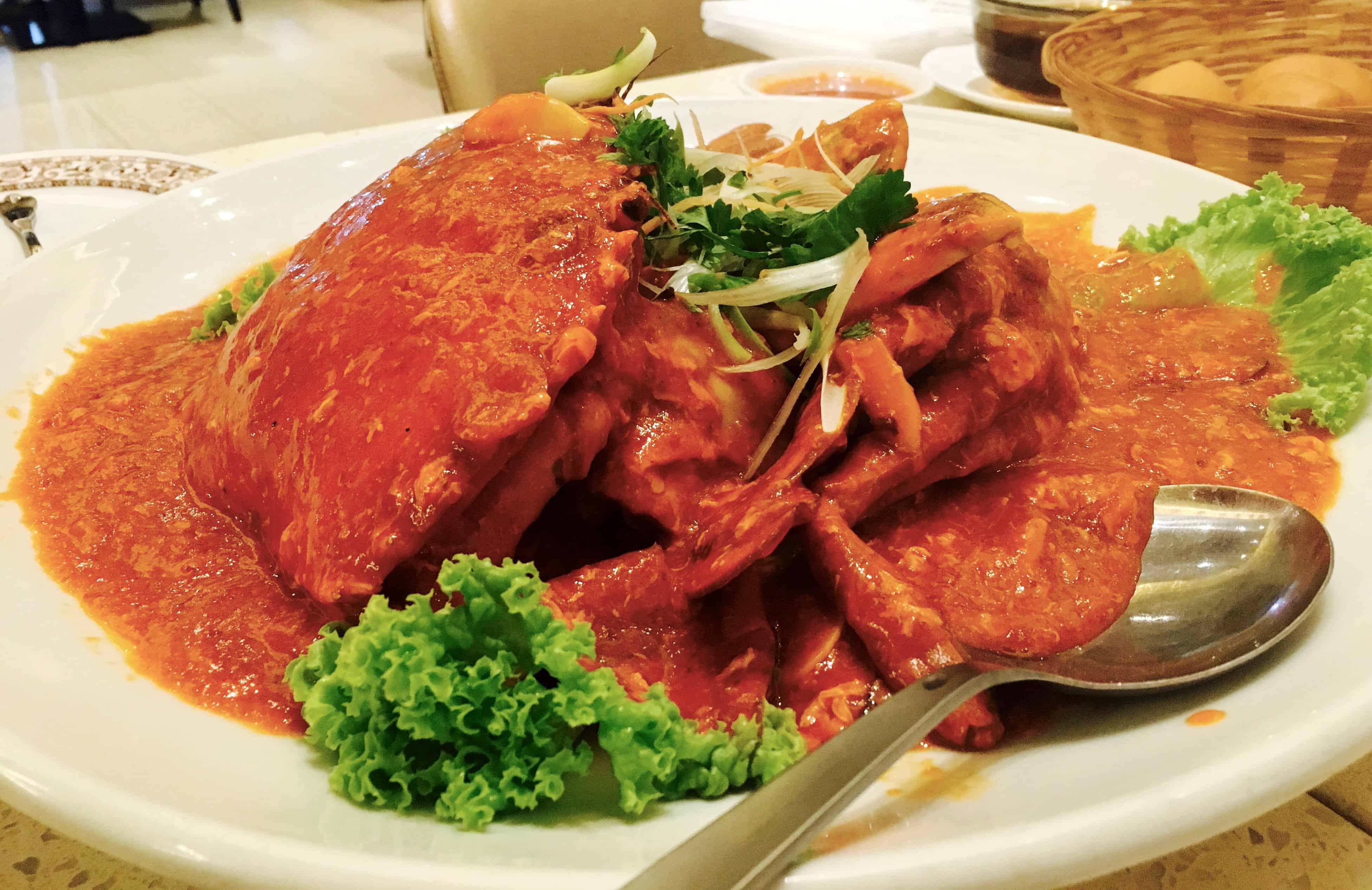
Our Singapore food journey starts in Chinatown with the country’s most famous dish: Singapore chilli crab. This delicious feast of whole mud crab simmered in a thick, rich tomato chilli sauce, is meant to eaten with your hands, so get ready for a mess.
Despite the name, our crab isn’t local; like most, it’s been sourced from Sri Lanka. The meat is firm, tender and tasty and the sauce uniquely sweet and savoury, thick with strands of egg. It’s not at all spicy, though it can be if you ask, or opt instead for the locally preferred variation, black pepper crab.
I’ve never eaten crab before so the Vivian Ward moment isn’t entirely unexpected. Still, I’m mortified when I crack a crab leg and send half of it flying over my shoulder to splat sticky red sauce all over the wall. I doubt I’m the first, but it’s an awkward reminder: the bib provided is not for show.
Our chilli crab introduction takes place at Chinatown establishment, Fatty Weng, but the dish is served all over the island and every Singaporean will have their restaurant of choice for eating it. Like all shellfish, it will set you back a few Singaporean dollars depending on the weight of the crab, but it’s a food experience worth shelling out for (yes, pun intended).
Satisfy your sweet tooth with Tau Huay and Youtiao
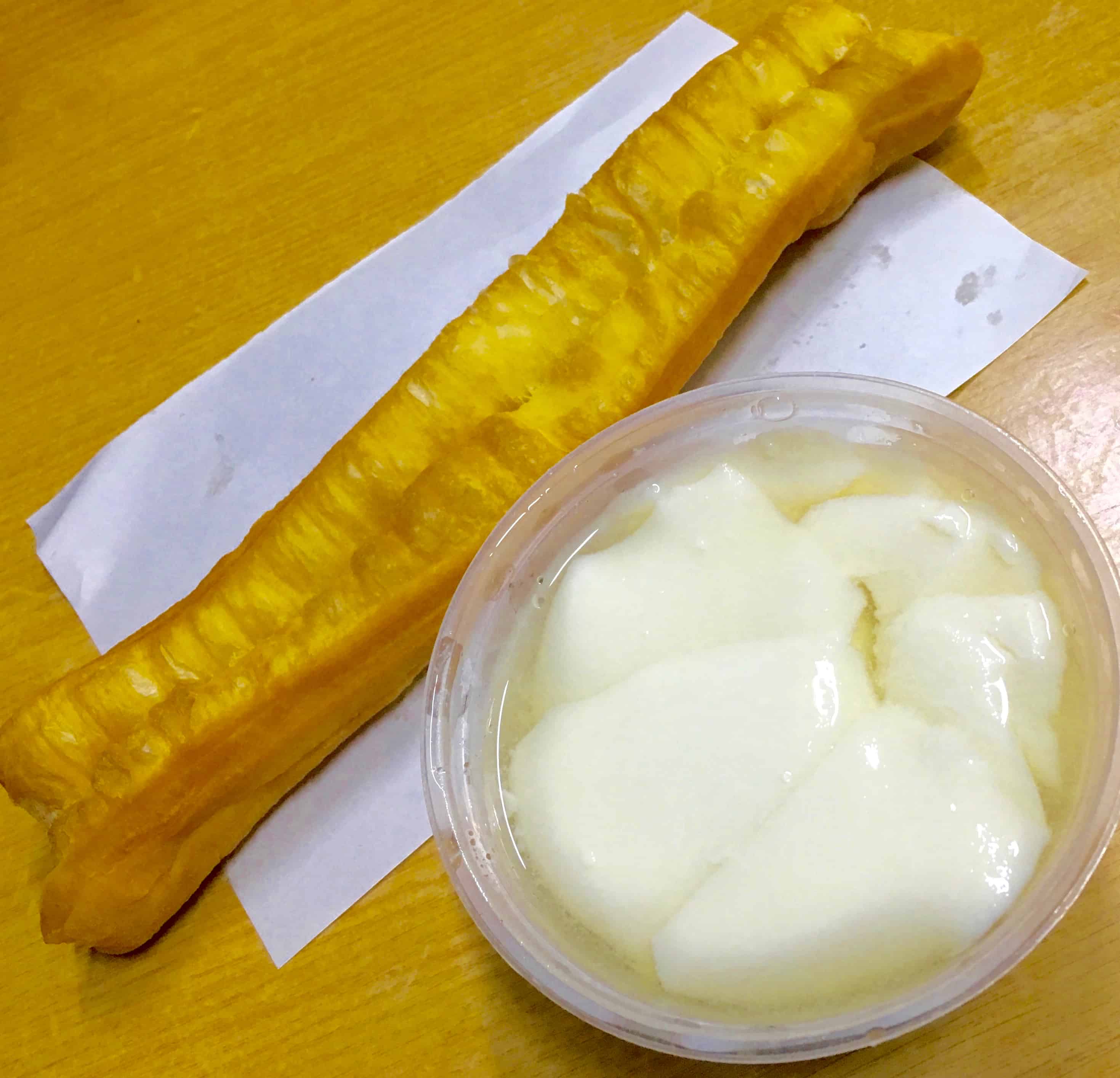
Unless you’ve loaded up at dinner on those tasty steamed Chinese buns that seem made for mopping up chilli crab sauce, you should still have space for dessert.
Our local food guru Dan is keen for us to try something traditional, and takes us to one of his go-to dessert stops, Rochor Beancurd House, in the suburb of Geylang.
There we try Tau Huay, a bowl of cold soy beancurd pudding, one of Singapore’s most popular desserts. You’ll find it served hot and cold in stalls and shops everywhere. It’s light, refreshing and just a little bit sweet.
I’m quite partial though to the doughy sticks of Youtiao we eat alongside the pudding, a sort of Chinese churros without the sugar coating. My kind of dessert.
Start your day right with Kaya Toast and soft-boiled eggs
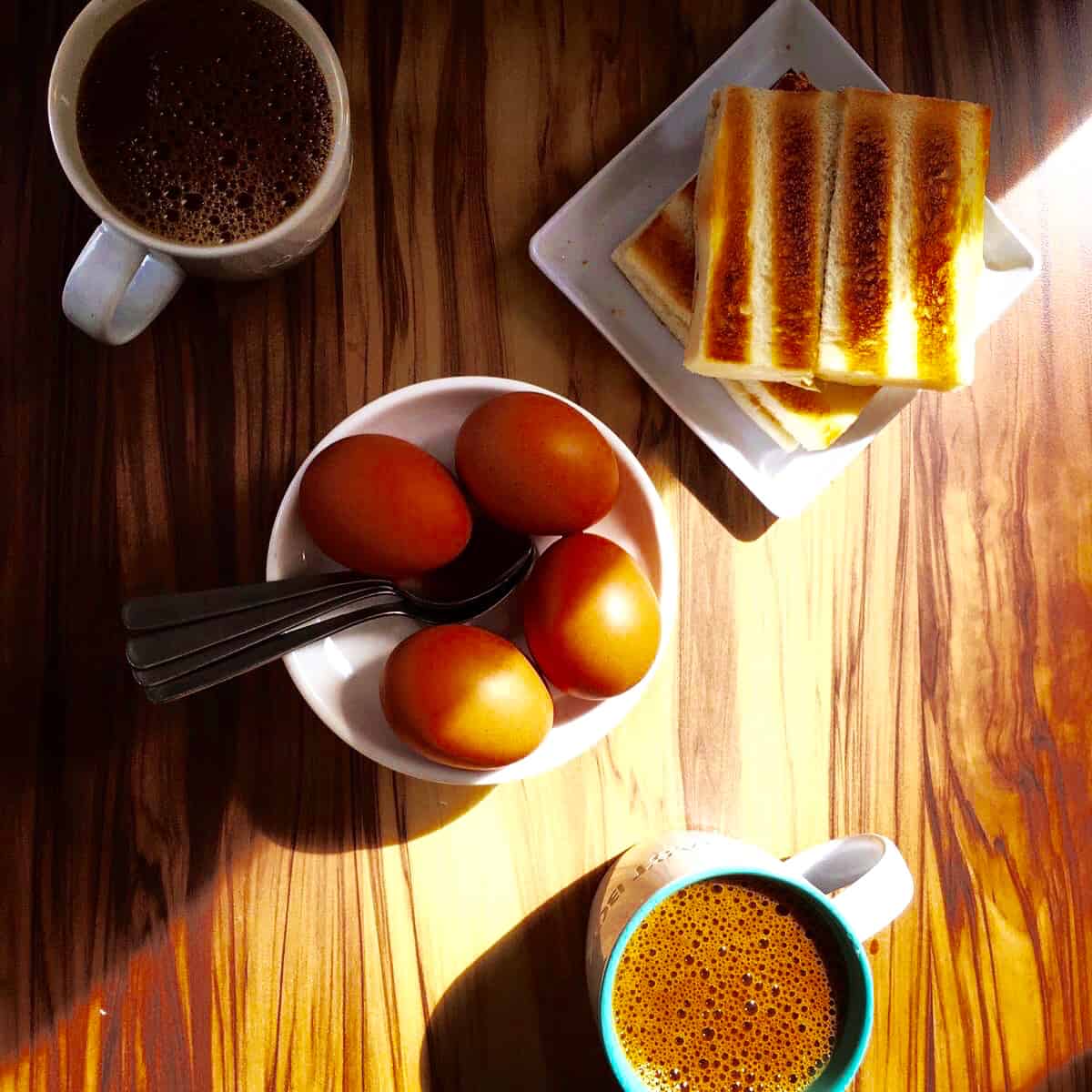
We’re tipped off that a Kaya Toast breakfast is a must-try while in Singapore and so our second day starts with a trip to the local franchise kopitiam (coffee house), Toast Box, for what turns out to be a local version of ‘googy soldiers’.
Kaya is a coconut jam and the super-sweet spread on toast somehow works a treat in marriage with the gooey savouriness of the soft-boiled egg its dipped into.
It’s all washed down with a sweet cup of kopi – locally sourced coffee brewed in a long-spouted pot, with a heavy dash of sweet condensed milk. Fortified with this breakfast, you’ll be ready to take on a day of Singapore sightseeing.
Find out if the hype’s real with a bowl of Hainanese Chicken Rice
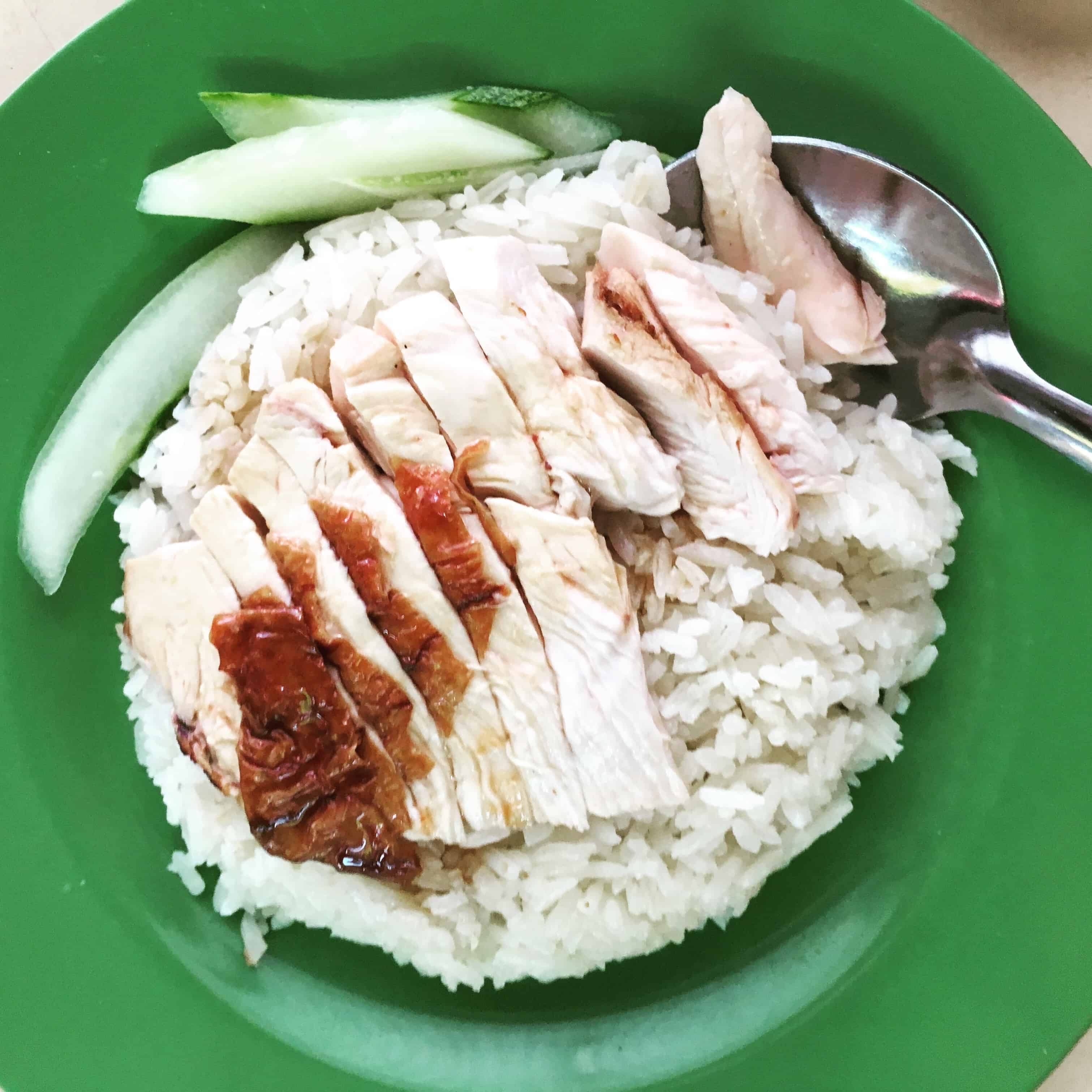
A specialty brought to Singapore by Hainanese Chinese immigrants, Hainanese Chicken Rice has gone on to claim the title of Singapore’s national dish.
It’s certainly the country’s most popular dish: if there’s a queue at a food centre, it’s usually for chicken rice. Is it really that good? Michelin reviewers seem to think so; they awarded a star to a hawker centre chicken rice stall in Singapore earlier this year. As with all local specialties though, who makes the best chicken rice is a topic of serious debate: ask a local for their recommendation.
We aren’t quite prepared to queue hours for a bowl of Michelin-quality rice, but we are determined not to leave the country without finding out what the hype’s all about. We finally do, at Changi Village Hawker Centre near the airport.
The verdict? It’s simple, flavoursome comfort food. We’re not convinced it’s worth a long wait, but then, we haven’t tried the Michelin star version.
Experience the cultural flavour of Peranakan cuisine
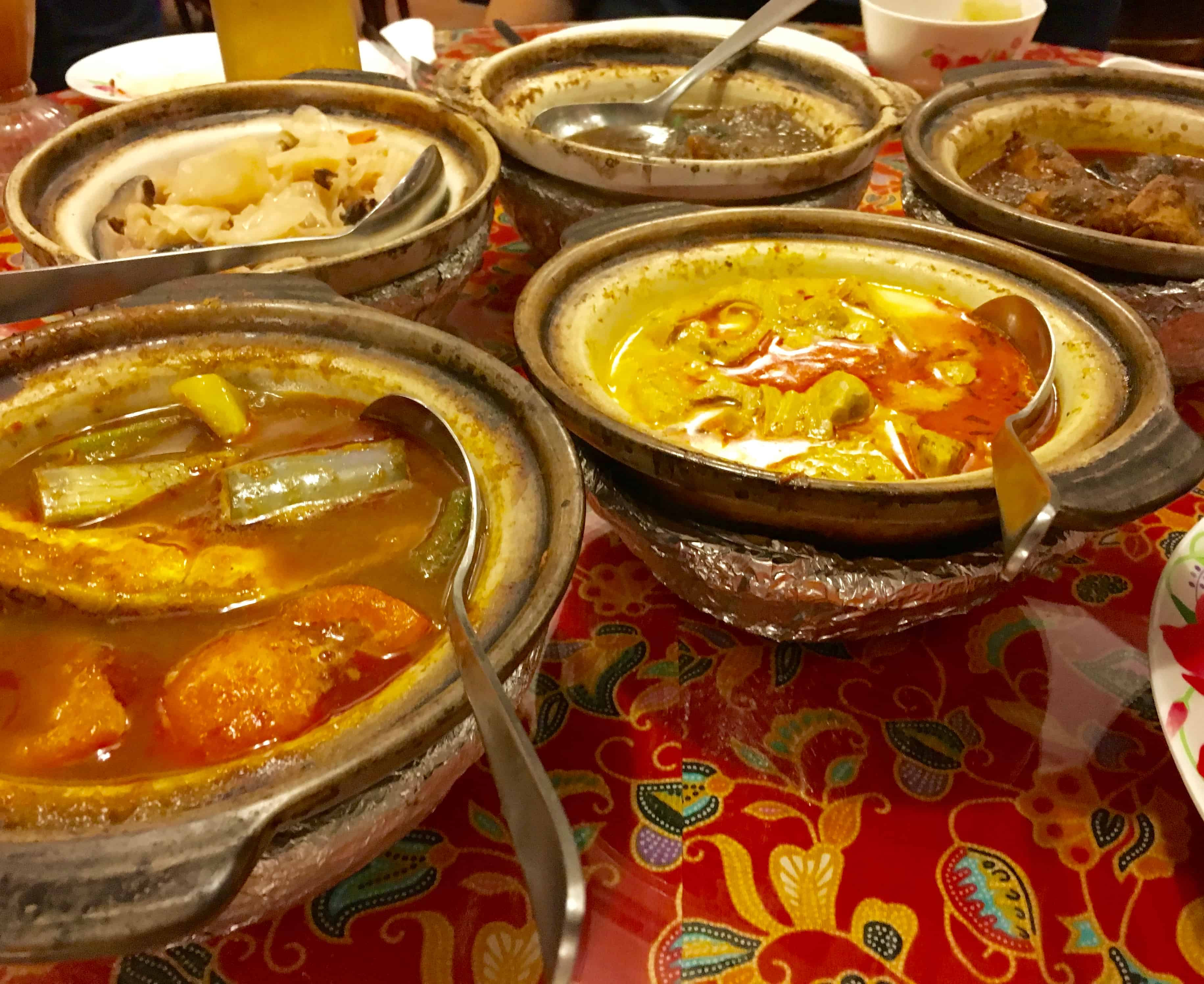
Centuries ago, Chinese immigrants moved throughout the Malay peninsula and islands, including Singapore, many of them marrying local Malay people.
Their descendants formed a unique community and culture called Peranakan, or Nyonya, blending Chinese and Malay customs over time with influences from England, India, Indonesia and the Middle East.
The Peranakan community is alive and thriving in Singapore today, and Peranakan/Nyonya cuisine is one way you can experience the cultural traditions of this vibrant and eclectic people.
There are a number of Peranakan specialty restaurants around Singapore city. We savour the tangy spices of a Peranakan feast at Chilli Padi Nyonya Restaurant, enjoying a range of curries and soups loaded with flavour and aroma, from a traditional fish head curry to a sweet and savoury jackfruit stew.
Break your fast with a hearty bowl of porridge
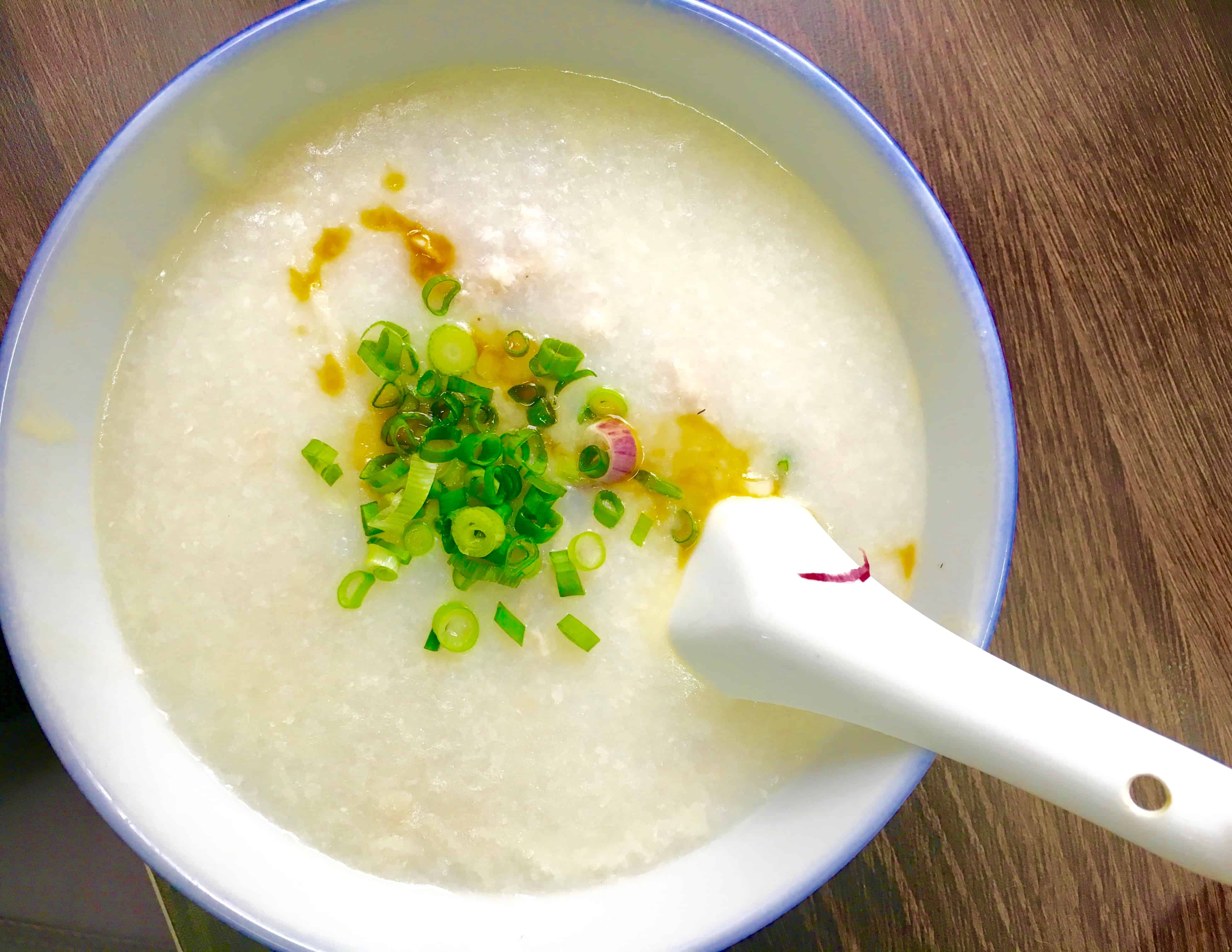
Granted, as someone who doesn’t work up an appetite until mid-morning, I’m slow to warm to the idea of a full-blown bowl of porridge for breakfast, let alone one with meat. And the extensive menu at popular Singapore porridge joint, Ah Chiang, is a serious departure from the simple Uncle Toby’s I grew up with.
We’re here to eat like the locals though, so we ask our Singaporean friends to do the ordering for us; my only condition, no tripe.
As a rice porridge first-timer, I’m completely taken by surprise. It’s deliciously savoury – warm, smooth and flavoursome. So is our side dish of raw salmon with shredded ginger and chilli.
The century egg however, with its aged colouring, fishy essence and disconcerting creamy texture, lives right up to our companions’ description as ‘an acquired taste’. It’s a taste I’m unlikely to acquire anytime soon but it’s definitely worth a try.
Warm up with a bowl of do-it-yourself Nyonya Laksa
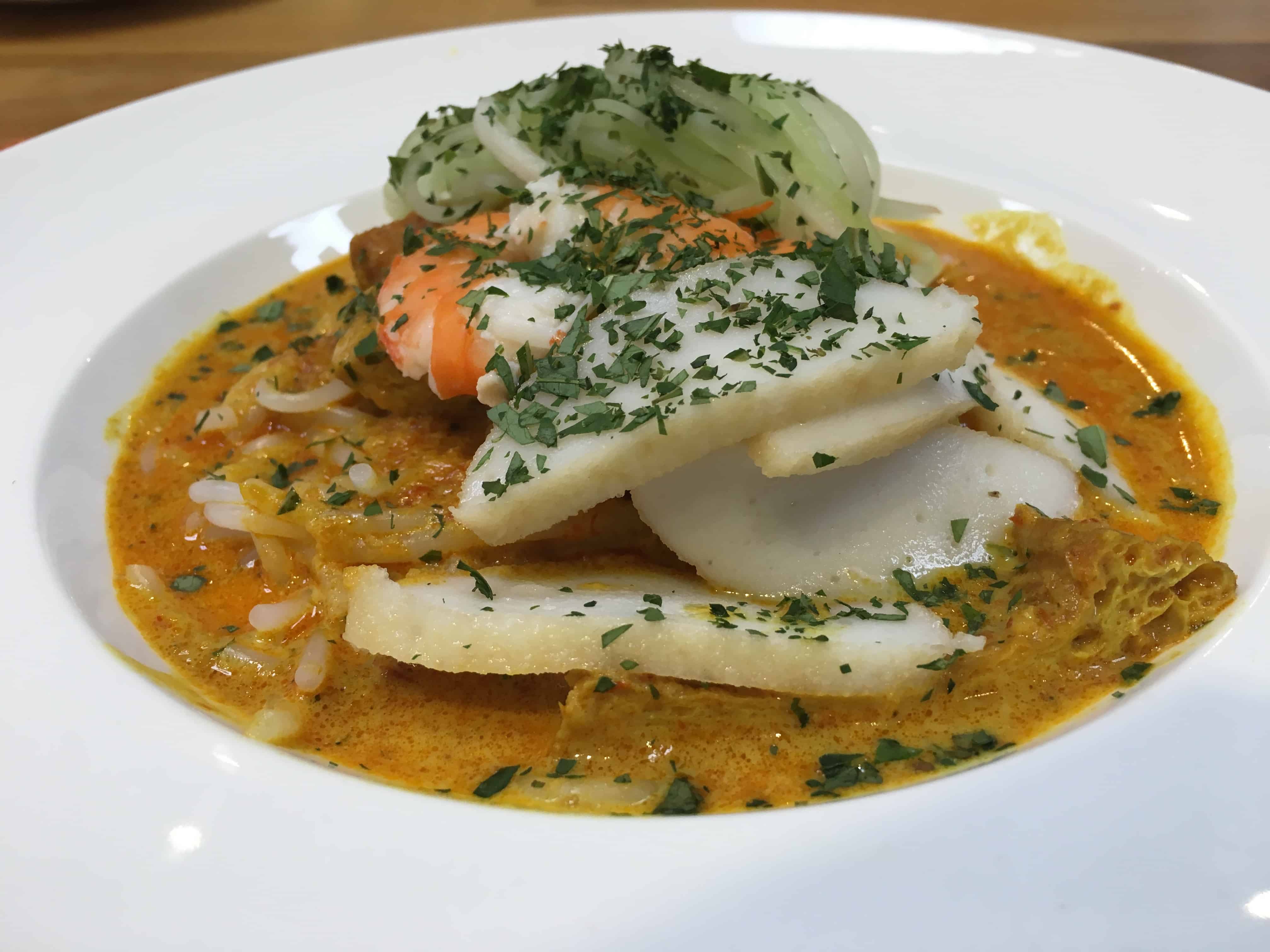
For us, this visit is all about eating and that means getting behind the scenes of Singaporean cuisine as much as munching through its hawker centre food stalls.
We’ve signed up for a cultural cooking class with Food Playground, a social enterprise that brings the rich culture and history of Singaporean food to life through storytelling and hands-on learning. It all takes place under the expert tutelage of local return-to-work mums and retired women, the country’s real master chefs.
Our class starts at 9.15am and by 11.30am, we’re sitting down to a beautiful spread of vegetable spring rolls, local recipe Nyonya laksa with seafood, and Hoon Yueh, a Nyonya dessert made with coconut milk and corn kernals.
It’s a delicious feast, and all the more rewarding knowing we’ve made it ourselves, from scratch, while learning about Singaporean life and culture from our delightful cooking tutor Lydia. It’s a food experience not to be missed.
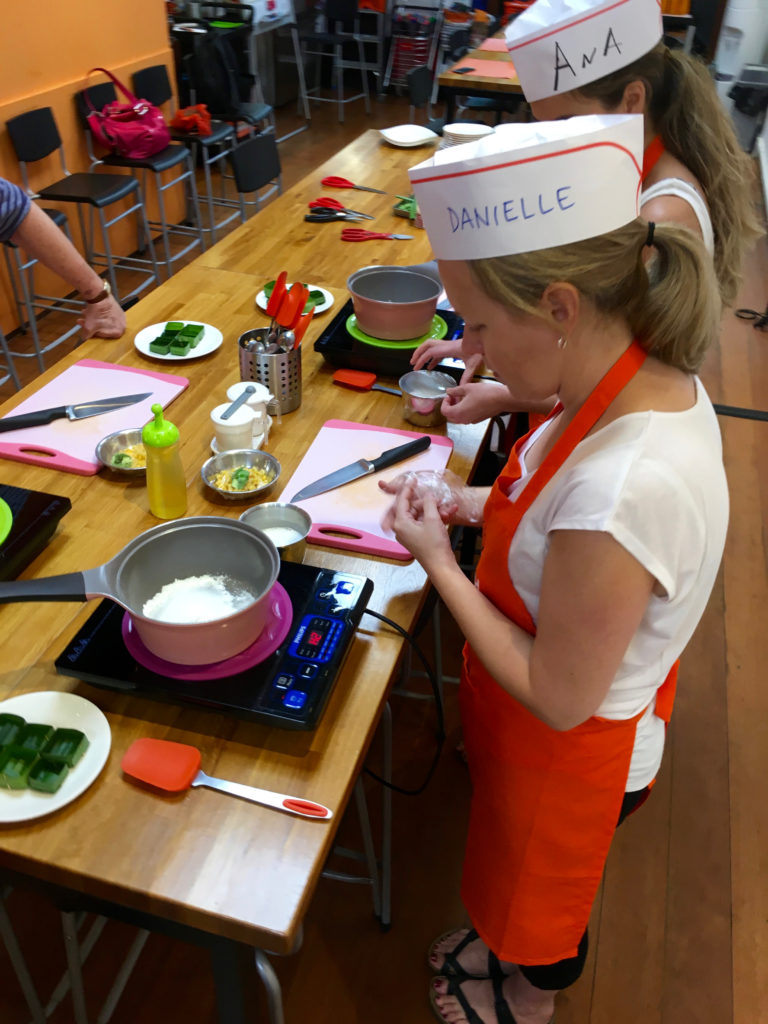
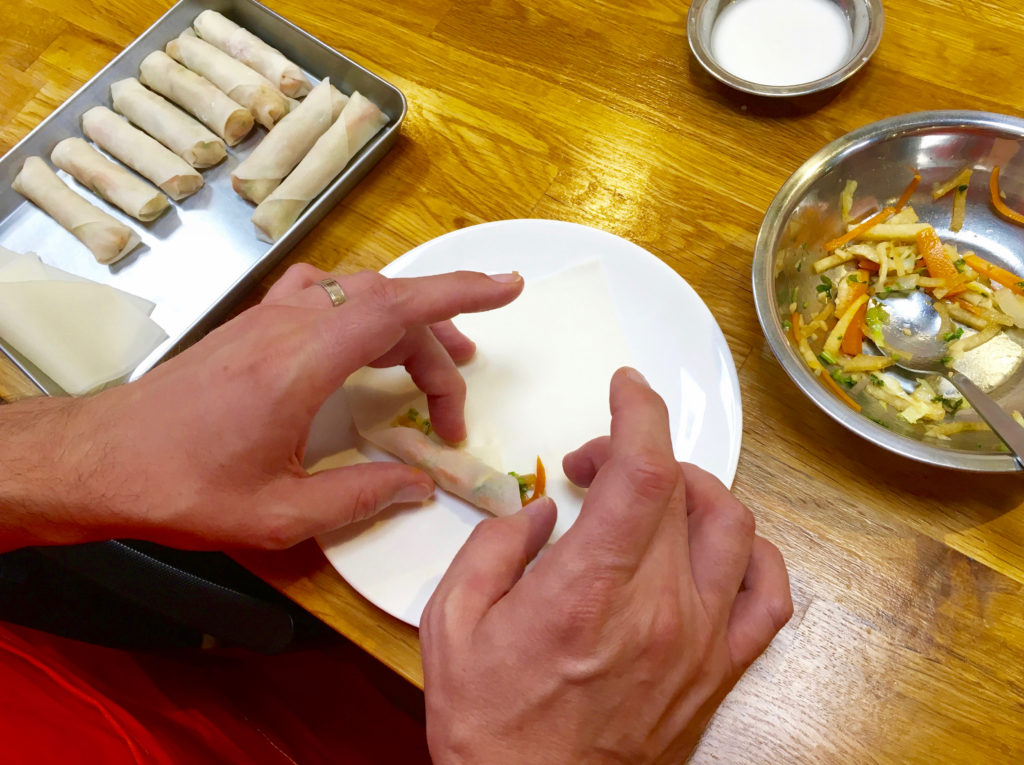
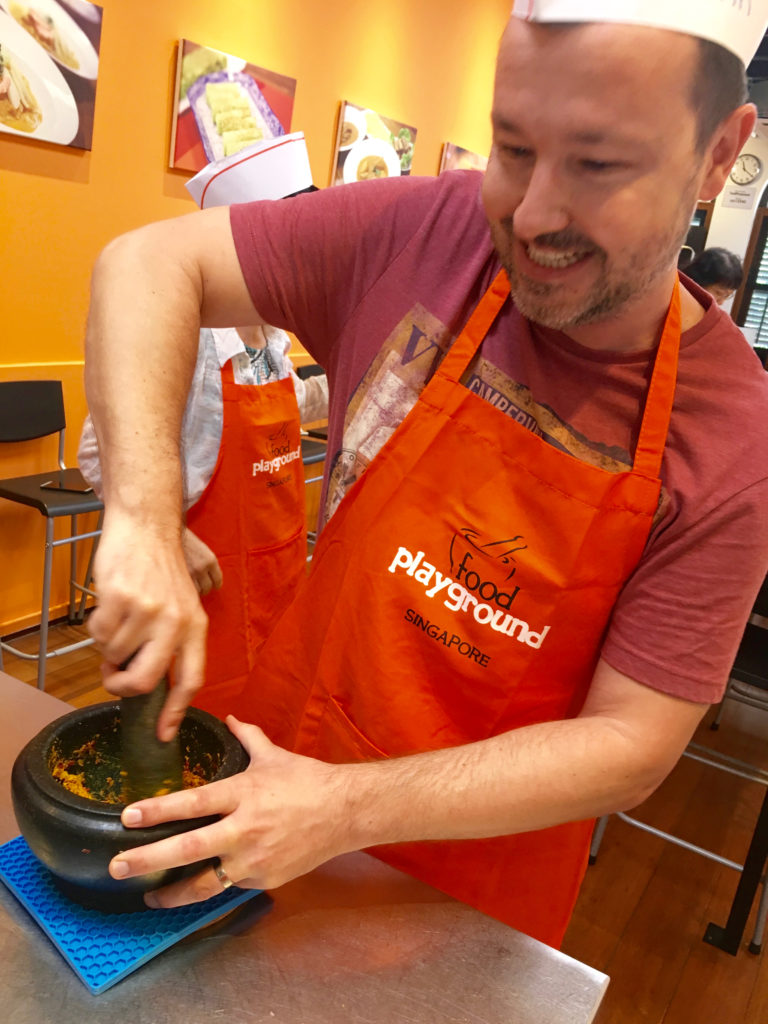
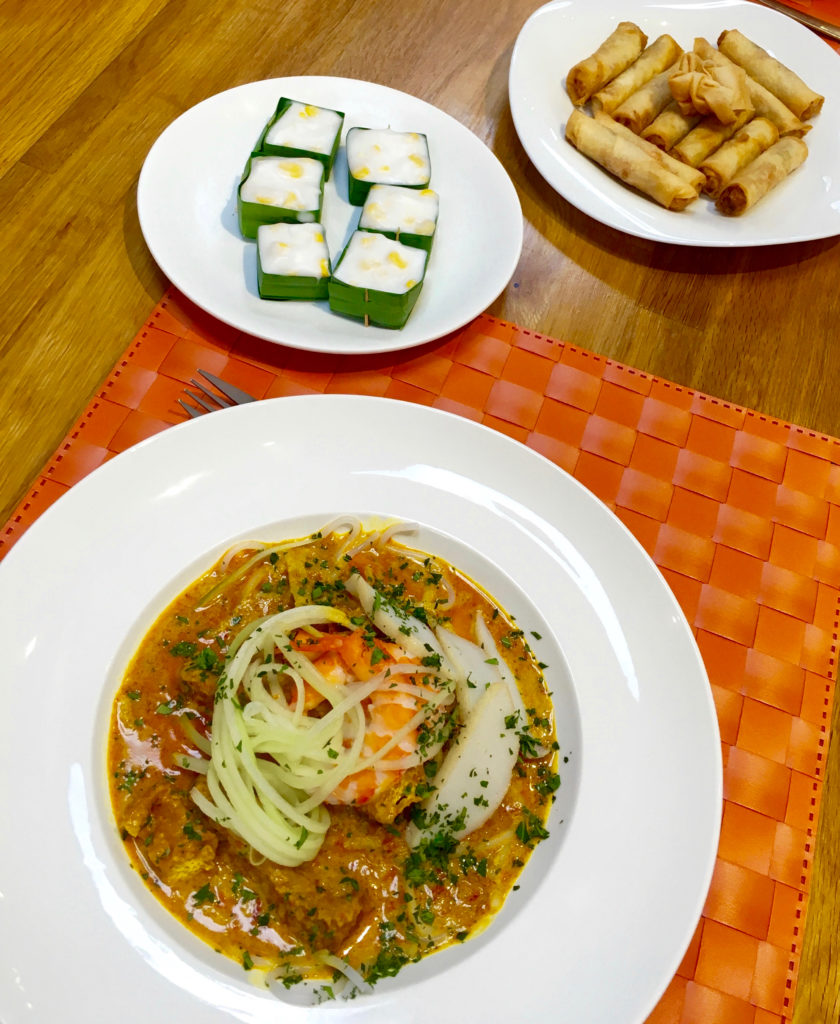
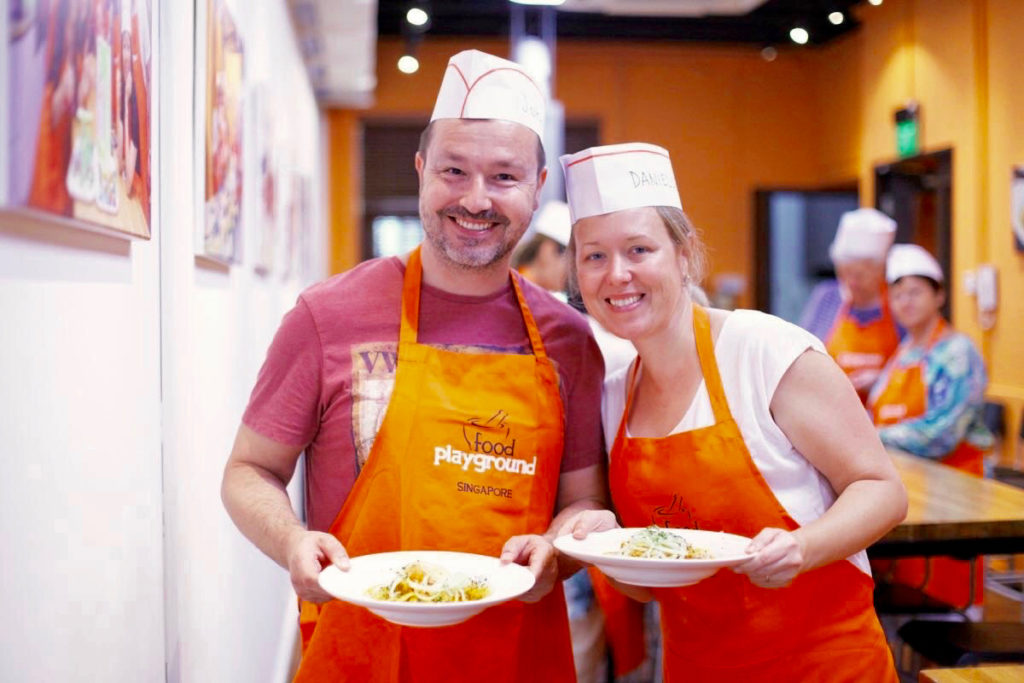
Cool off with a Singaporean craft beer
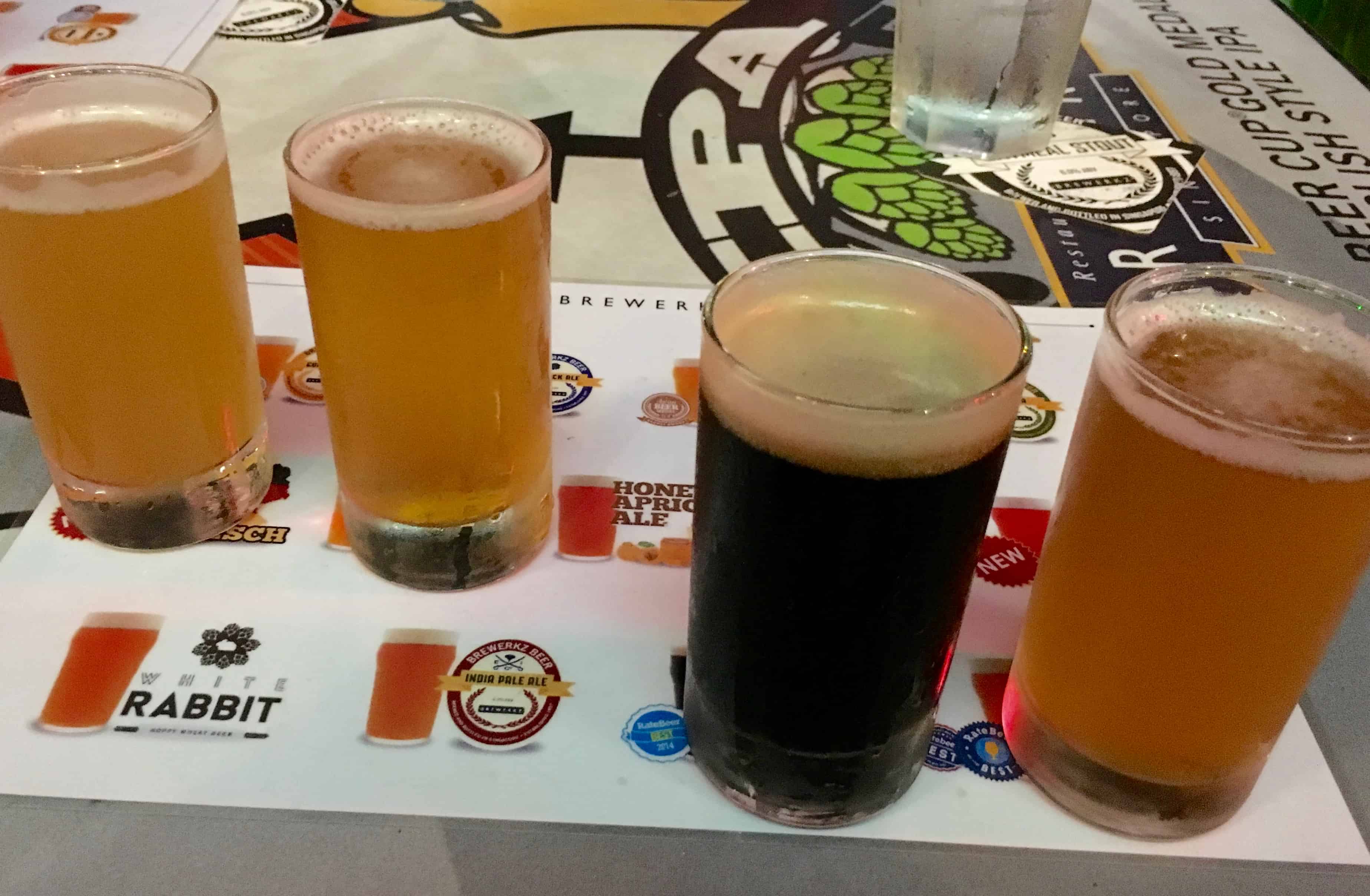
Given John’s mission to search out local brews wherever we travel, it goes without saying that craft beer would find its way into our visit.
While Singapore was slow to welcome the craft beer revolution, it’s in rapid catch-up and there are a number of microbreweries on the island along with a slew of bars and pubs serving craft beer.
We opt for the centrally-located Brewerkz Riverside Point for a tasting paddle. Overlooking Singapore river and quirky Clarke Quay, it’s a very welcome break from the searing afternoon heat.
We also taste the wares another day at the Little Island Brewing Company, which operates its brewery and bar by the water at Changi Village near the airport. Although a little further to travel, it’s a particularly nice spot to chill if you have more time on the island, or if you’re transiting overnight in Singapore and staying near the airport. It’s also just next to Changi Village hawker centre and its tasty selection of food stalls. Speaking of….
Taste a range of local dishes at a Hawker Centre
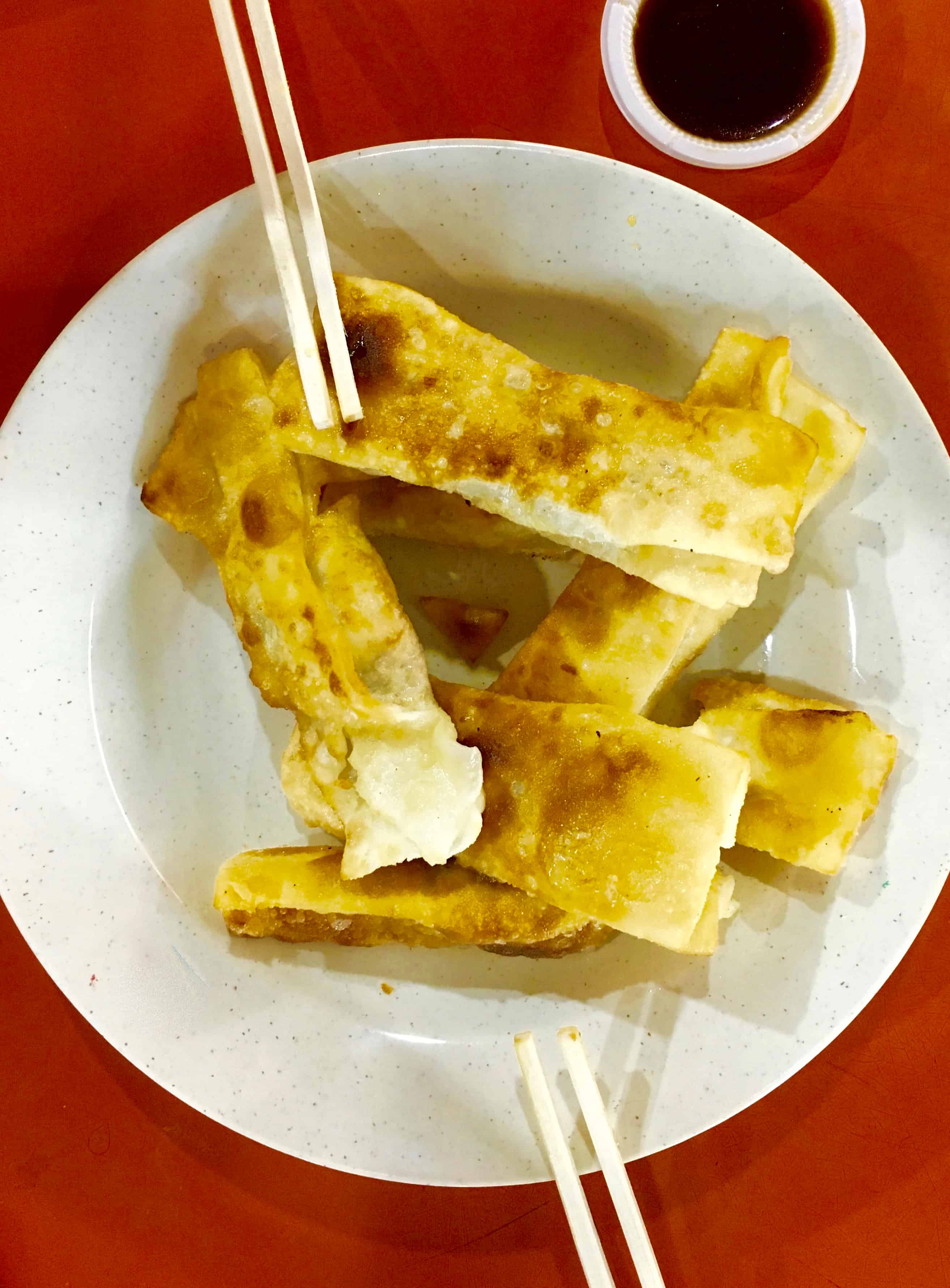
Hawker centres are a Singaporean institution and a must-do for visitors seeking cheap, tasty, local fare. The centres, typically semi-enclosed markets packed with food stalls, were established decades ago as a more hygienic alternative to mobile, street-side hawker stalls.
It can be a frenetic, overwhelming experience for newbies like us, and we’re lucky to have a local with us on our first visit to help navigate the etiquette (find a seat first and claim it with a packet of tissues), the food (it’s literally a world of choice), and things to look out for (a popular stall usually means good food, etc).
At Maxwell Hawker Centre in the city, we snack on chicken satay, Nyonya Popiah – a fresh egg pancake roll, and Rojak – a pile of fruit and vegies covered in a sticky, tangy, spicy sauce made with shrimp paste, chilli, sweet and soy sauce and sugar. It’s the perfect place for comfortably stepping out of our comfort zone and sampling lots of plates of both the familiar and unfamiliar.
Like chilli crab, every Singaporean will have their preferred hawker centre so try and sound out a local for their recommended spot (and their favourite food stalls).
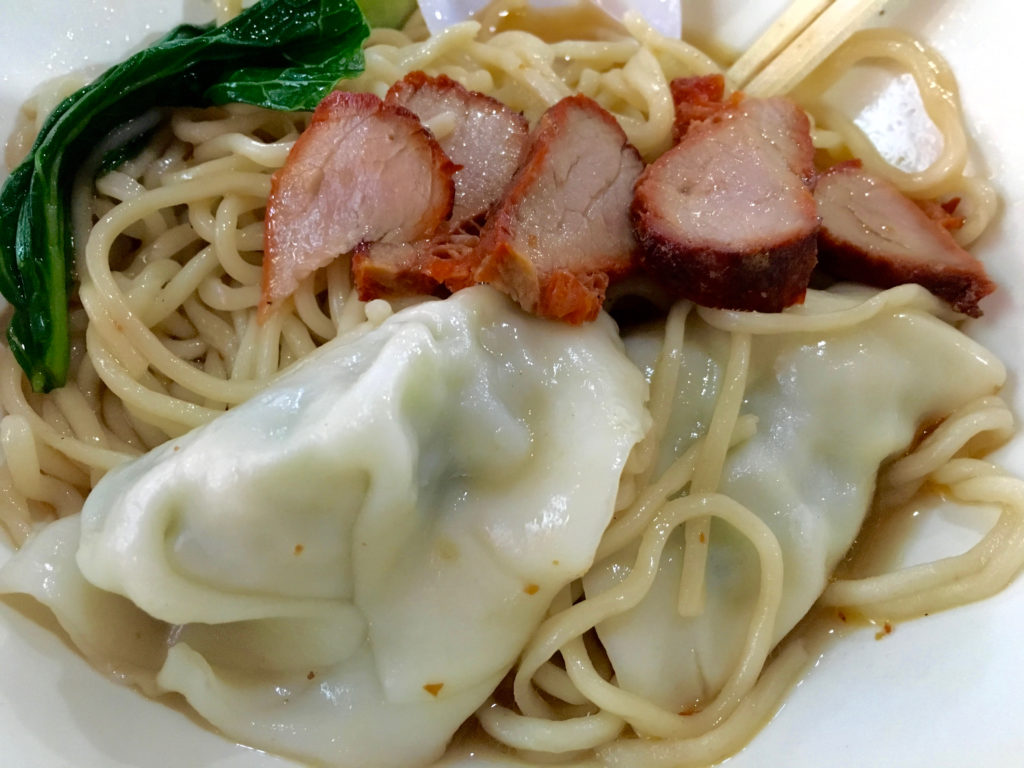

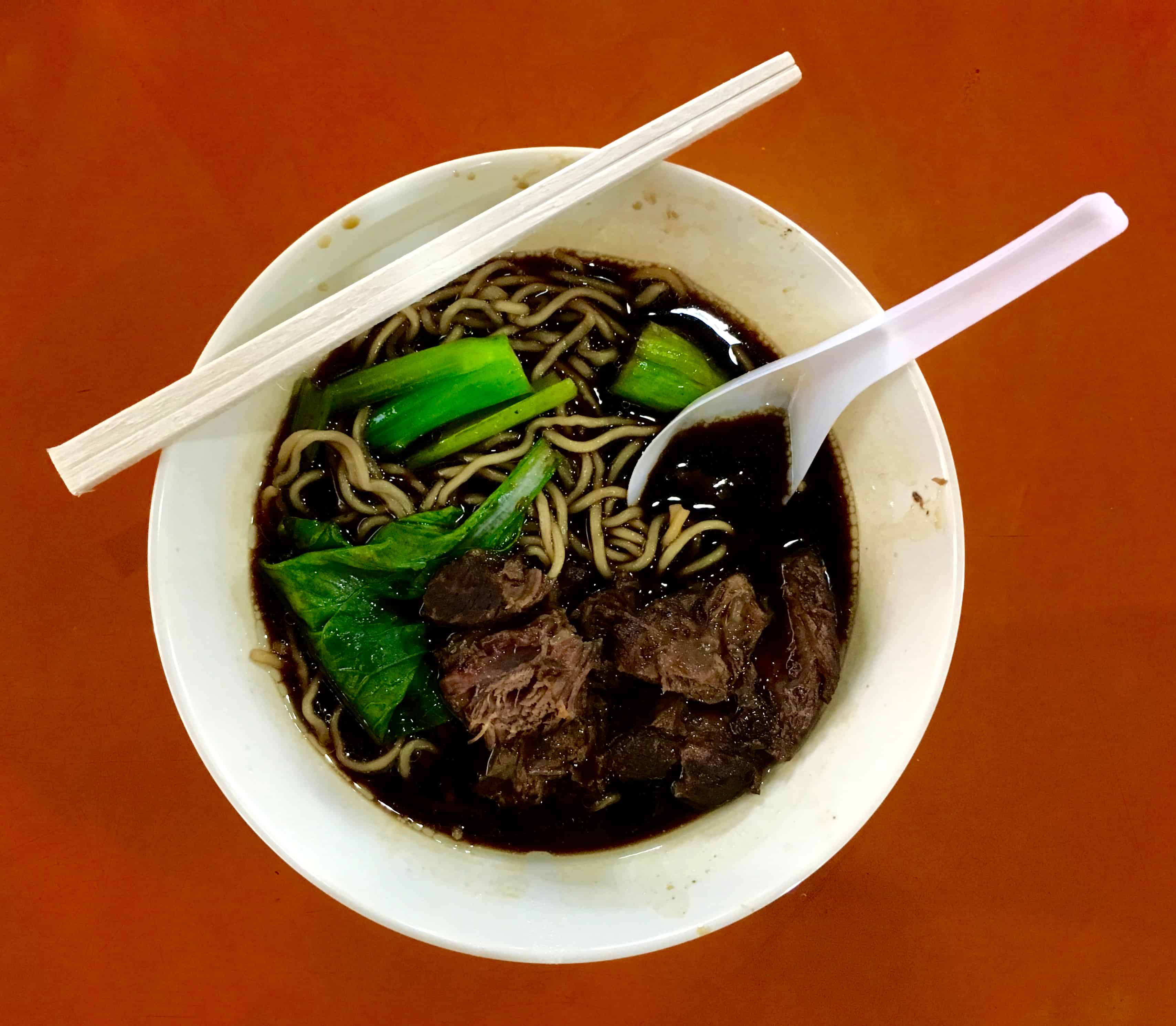
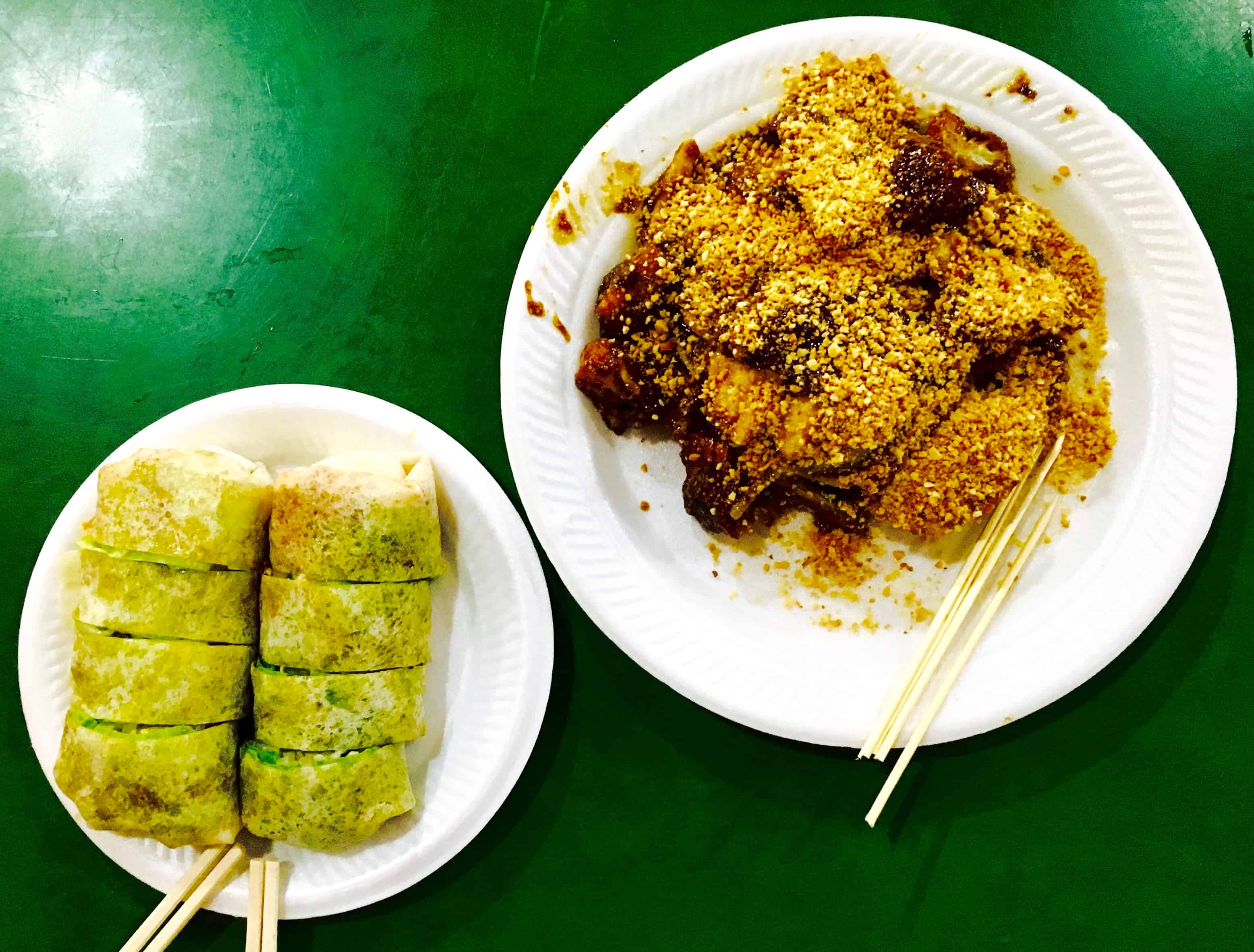
Hold your nose and open your heart to Durian fruit
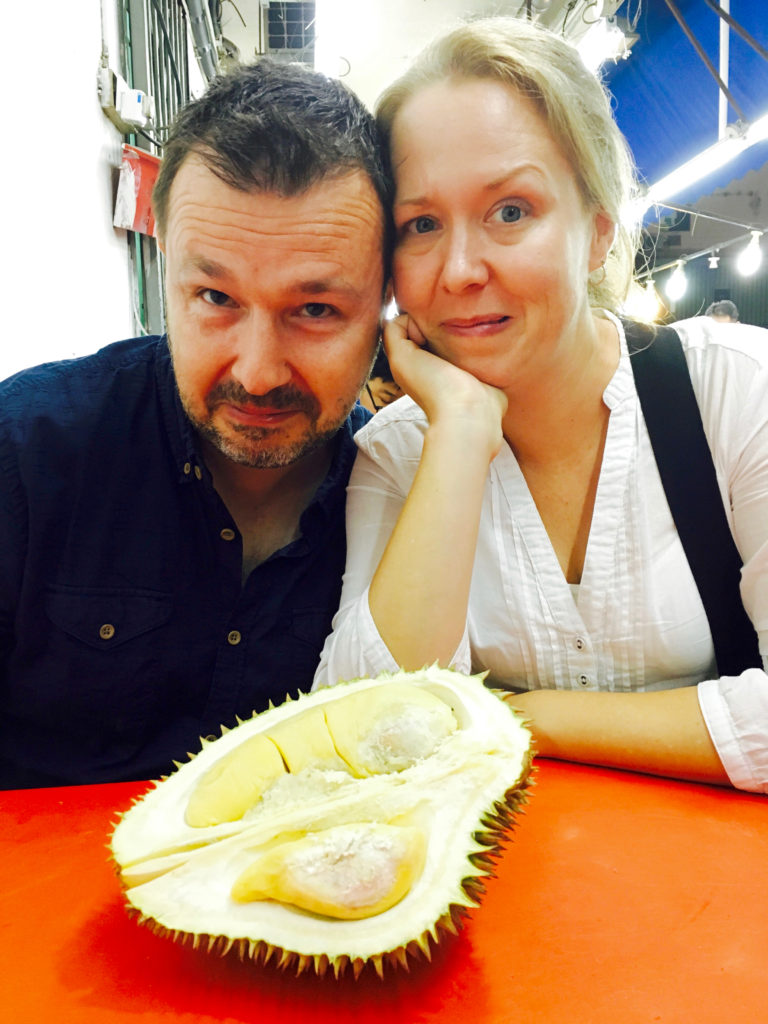
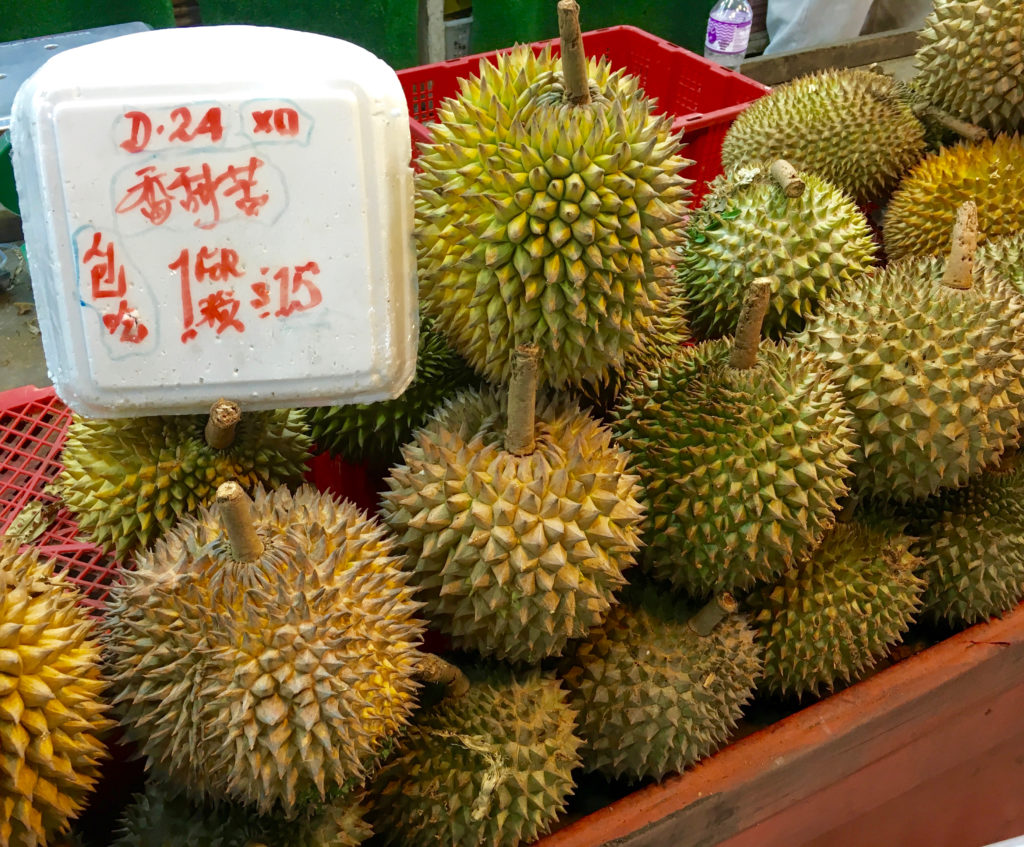
Our Singapore eat-inerary wouldn’t be a fait accompli without eating Durian, south-east Asia’s most notorious tropical fruit. I’m hesitant. This is the fruit said to ‘taste like heaven, smell like hell’. It’s odour is so strong, it’s banned on public transport and in hotels.
We can smell the Durian fruit stalls a block away. Within moments, our friend Ewan has selected a big spiky fruit and the seller is hacking the globe in half, presenting us with the soft, squishy yellow segments inside.
The pungent aroma goes straight up my nose as I take my first bite. The texture is like a thick, creamy custard and the taste, well, it’s almost impossible to describe. Is it sweet? Kind of. Savoury? A little. There’s a hint of brown sugar. A tinge of garlic. One bite is enough for me. John manages two. Fortunately Ewan is a fan and makes short work of what’s left (which is most of it).
It’s not called the King of Fruit for nothing though and durian deserves the benefit of personal experience. Just hold your nose.
Tantalise your tastebuds with some of our other foodie ventures around the world.
